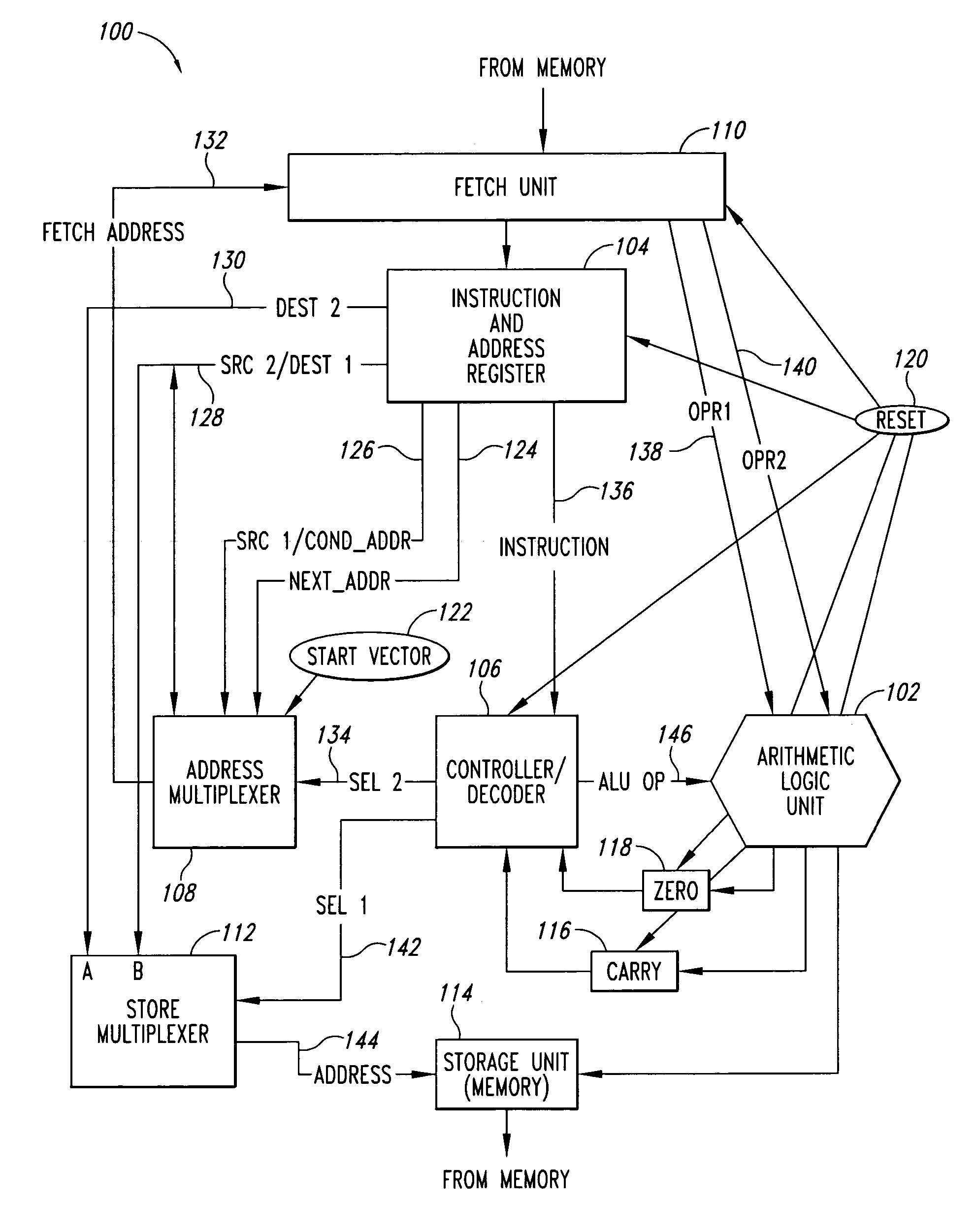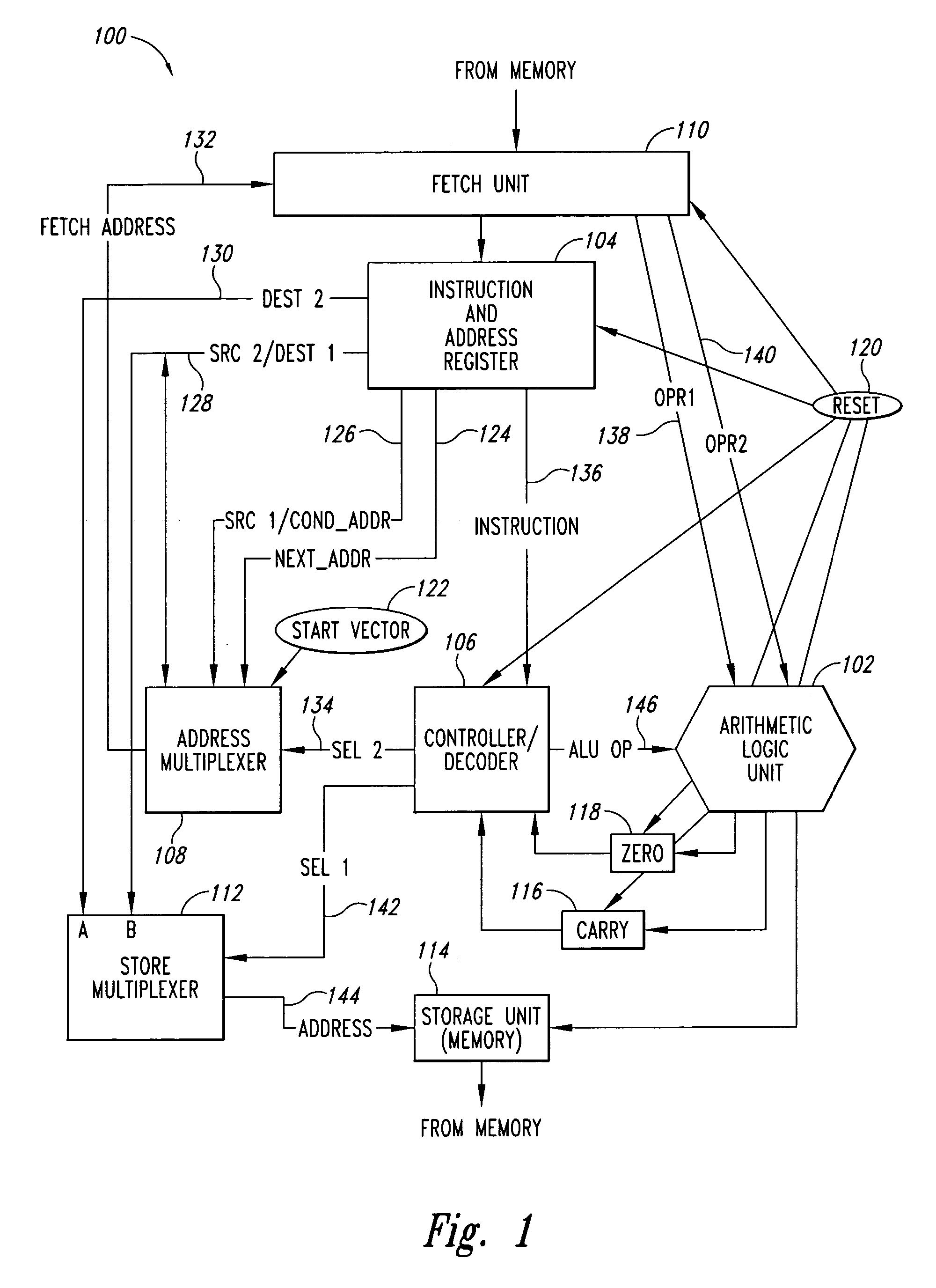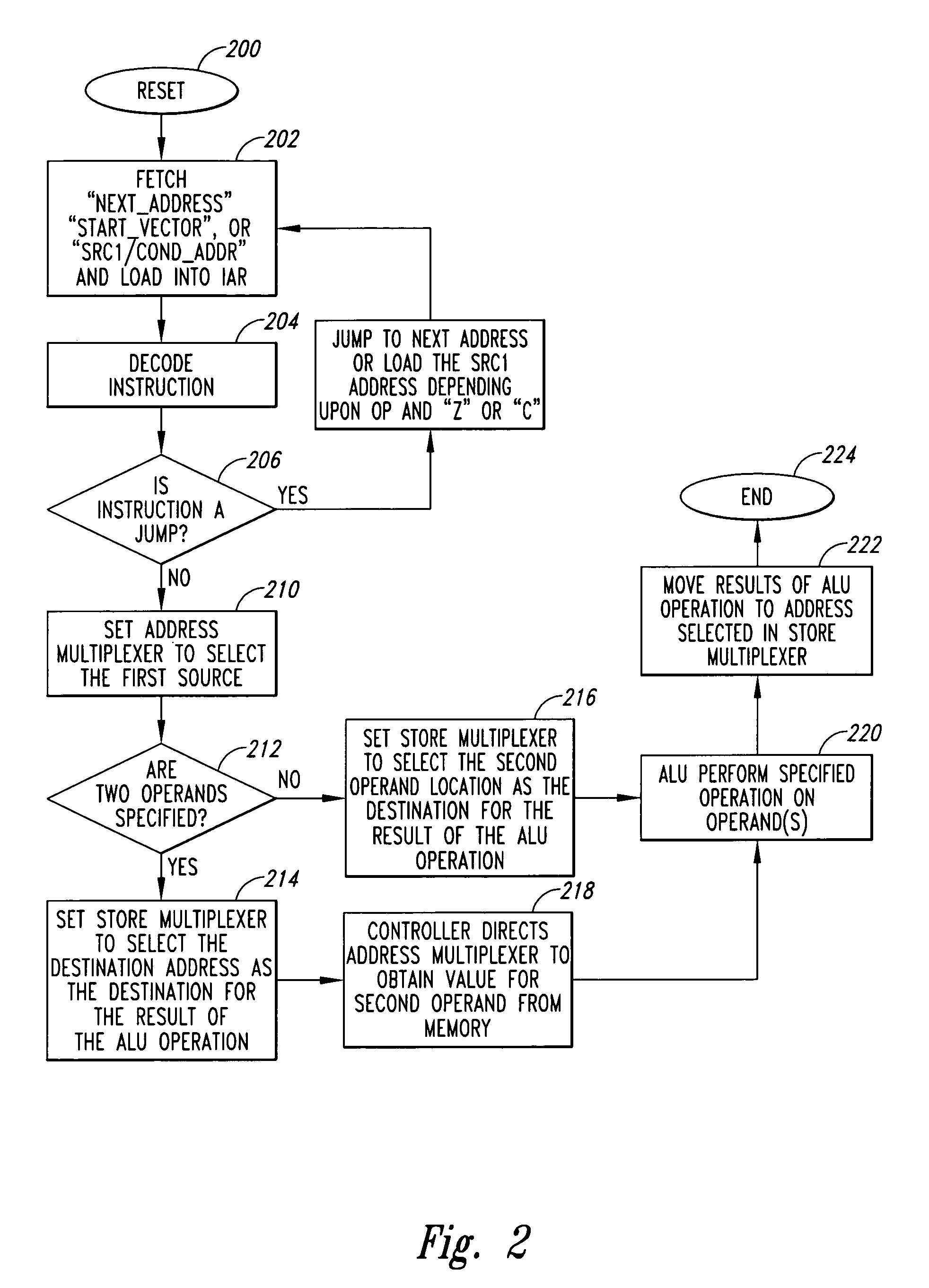Method and system for substantially registerless processing
a registerless processing and register technology, applied in the field of computer system processors, can solve the problems of large size and power requirements, the size and complexity of software programs used by many of today's systems have dramatically increased, and today's designers are often faced with the daunting challenge of having to squeeze ever more data, so as to minimize jumps and maximize code usage, the effect of simplifying logi
- Summary
- Abstract
- Description
- Claims
- Application Information
AI Technical Summary
Benefits of technology
Problems solved by technology
Method used
Image
Examples
Embodiment Construction
[0035]As shown in FIG. 1, one embodiment of a central processing unit “CPU”100 according to the present invention provides a Simple Instruction Set Computer or processor (SISC) that drastically reduces the number of registers needed to store and process data. Instead of providing numerous registers into which data (data herein includes instructions, addresses and operands) is temporarily stored, the CPU 100 utilizes only one instruction and address register to process CPU operations.
[0036]The CPU 100 accomplishes the before mentioned reductions in registers (and the accompanying reductions in size, speed and power requirements for the CPU) by utilizing an instruction set that encodes addresses directly into the data stream. As shown in FIG. 1, the CPU 100 utilizes many of those components which are commonly available in prior art CPUs, including an Arithmetic Logic Unit (ALU) 102, an Instruction and Address Register (IAR) 104, a Controller / Decoder 106 (ConDec), a Fetch Unit (FU) 110...
PUM
 Login to View More
Login to View More Abstract
Description
Claims
Application Information
 Login to View More
Login to View More - R&D
- Intellectual Property
- Life Sciences
- Materials
- Tech Scout
- Unparalleled Data Quality
- Higher Quality Content
- 60% Fewer Hallucinations
Browse by: Latest US Patents, China's latest patents, Technical Efficacy Thesaurus, Application Domain, Technology Topic, Popular Technical Reports.
© 2025 PatSnap. All rights reserved.Legal|Privacy policy|Modern Slavery Act Transparency Statement|Sitemap|About US| Contact US: help@patsnap.com



